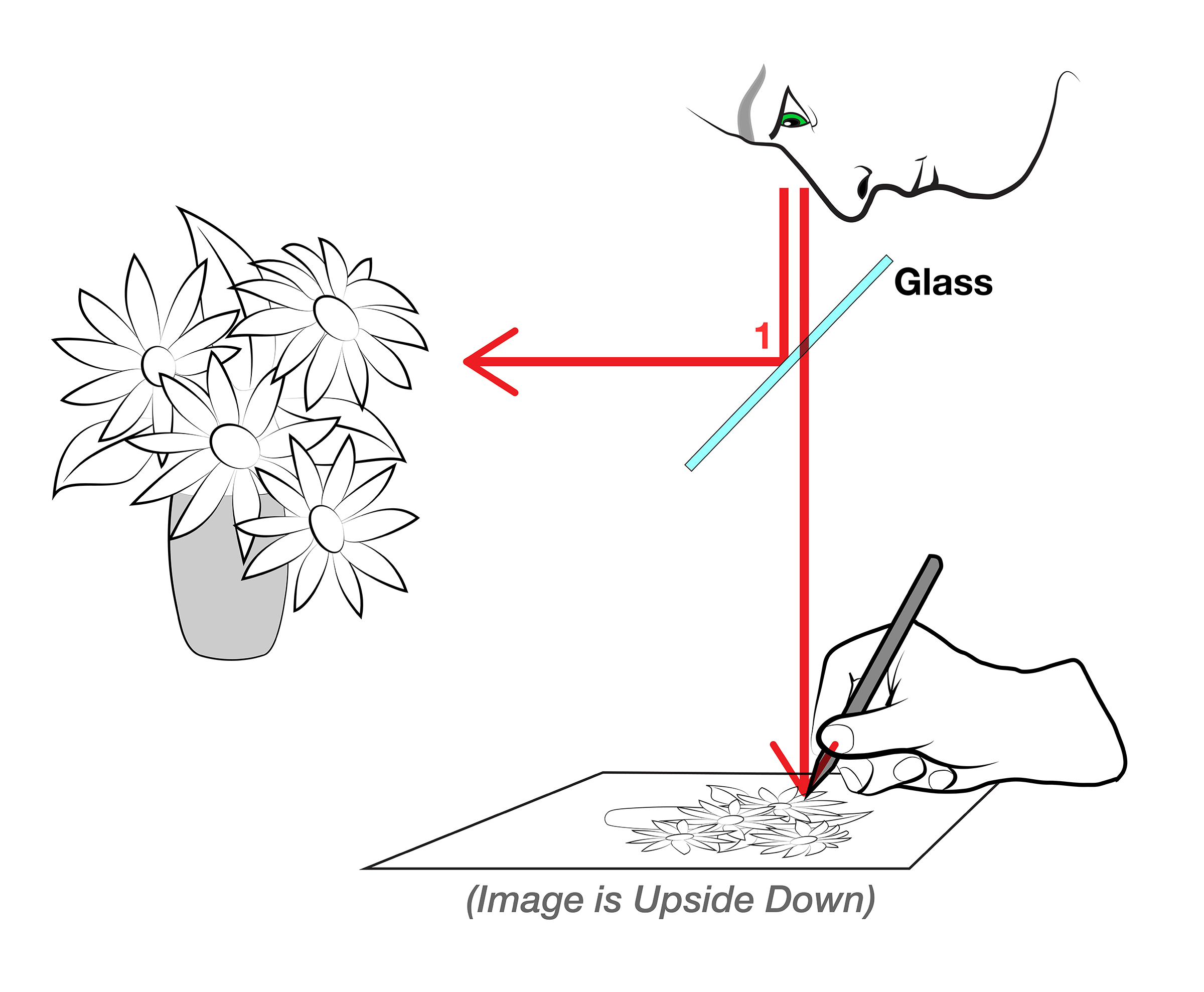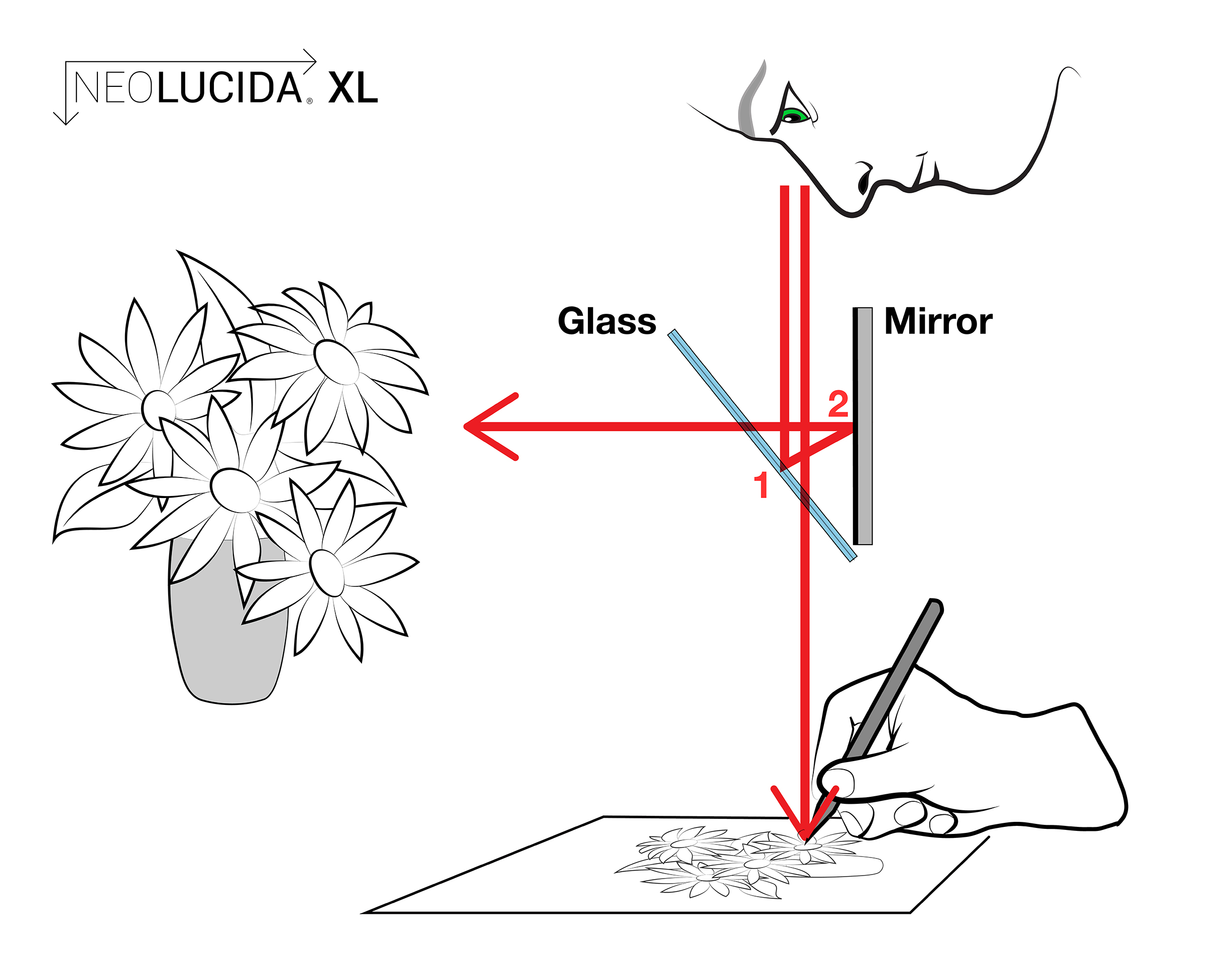How it Works
Angled Glass: Basic Reflections
Want to make a simple camera lucida? Angle a piece of glass at 45º over your paper. You will see a reflection of your subject hovering over your hand. There are, however, two problems with this basic arrangement:
The image reflects once, which means that the ghost image you see is upside-down and backwards. It’s not the worst thing in the world to draw upside-down, but it’s not easy.
Your ghost image will be quite faint. Depending on the lighting, a clear piece of glass will reflect less than 10% of the light that hits it. This is good for most applications—you want your windows to be as clear as possible. But for a camera lucida, you want to balance transparency and reflectivity to get a usable ghost image for tracing.
Different Camera Lucida designs solve these problems in different ways. The NeoLucida and NeoLucida XL use centuries-old optical configurations with modern materials to give you the best drawing experience possible.
NeoLucida XL: See-Through Camera Lucida
The NeoLucida XL is a “see-through” camera lucida design. The optical arrangement is a setup where you see straight through to your paper with a reflected ghost image of your subject superimposed.
In the NeoLucida XL, the angled glass is partially silvered, making it highly reflective but also maintaining enough transparency to see your paper. Instead of directly reflecting your subject, the partially-silvered glass reflects a mirror facing your subject. This double reflection (once at Number 1, then again at Number 2) means your ghost image is both right-side up and correct left-right.
NeoLucida: Split-Pupil Camera Lucida
The NeoLucida uses a prism to split your vision between a view of your paper and a view of your subject. There have been different prism configurations over time, but each split-pupil prism design works the same way:
When you place your eye close to the edge of the prism, the lower part of your view sees the paper. The upper part of your view looks into the prism. Your brain superimposes the two images into the appearance of a ghost image of your subject onto your paper.
The combination of internal reflections and optical refraction provides the double reflection to make the image on your paper right-side up and correct left-right.



